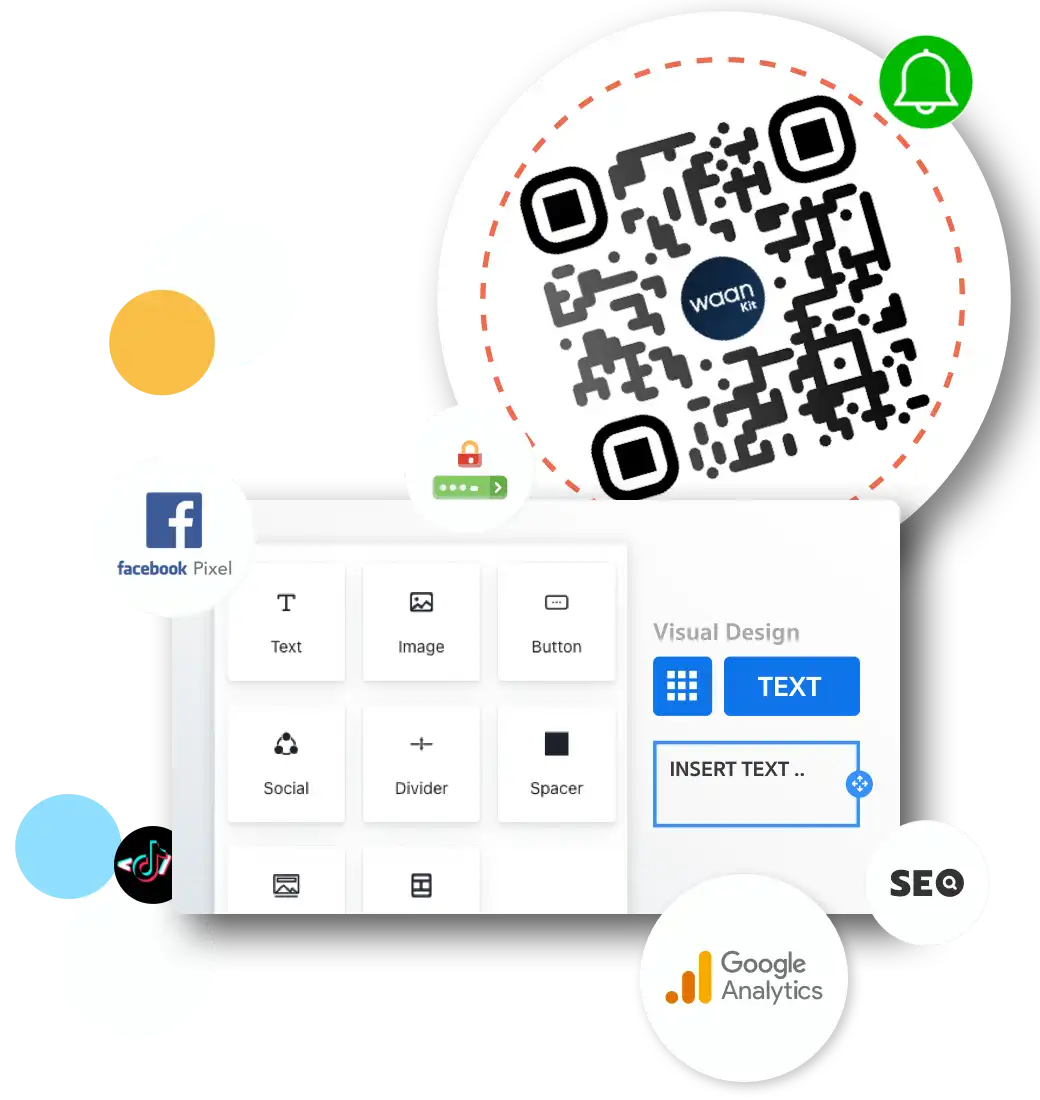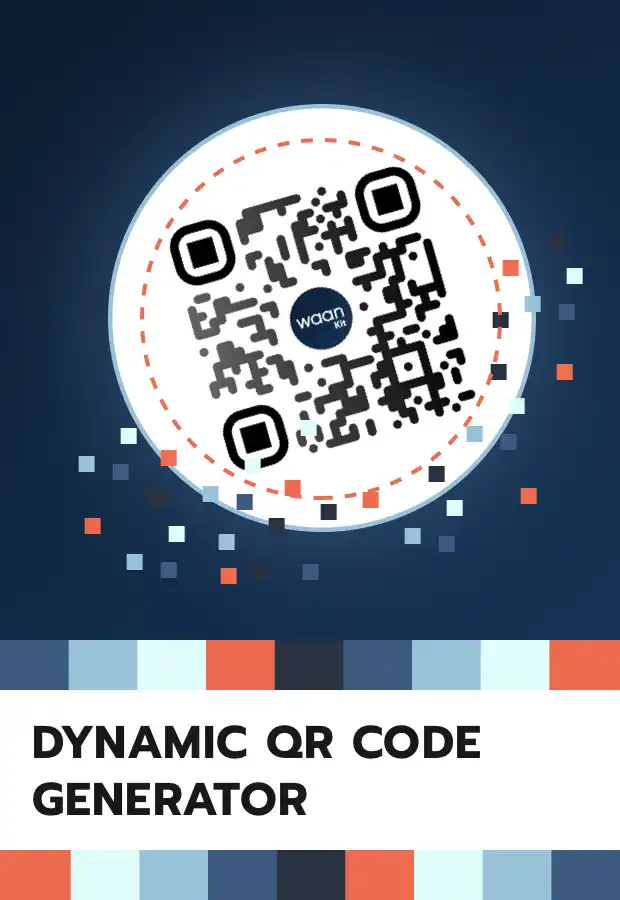QR Code, or Quick Response Code, is a type of barcode developed by Denso Wave company in 1994 in Japan. It is an evolution of the same barcode format used in industrial applications, but QR Code is designed to store more data than conventional barcodes. Nowadays, it is widely used in various applications such as product labeling, payment systems, and advertising.
QR Code Generator Tool
We have earned trust in QR code generation, with over200kgenerated this year.
Thank you for trusting WaanKit - Waankit.

WaanKit
Dynamic QR codes and Page builder
- Scan statistics storage
- Customize and edit links after creating the QR code
- Set expiration date for QR code
- Connect to external systems like Google Analytics, Facebook Pixel, and others
- Set privacy settings such as password protection
- Form submission notification system
Started with the free package!
No credit card required.
Getting started with QR codes.
Scanning QR Code can be done in several ways, such as:
- Mobile phones: Most smartphones, both iOS (Apple) and Android, have built-in capabilities to scan QR Codes using their camera or by using supporting apps.
- 2D QR Code Reader devices: These are specialized devices for scanning QR Codes. They come in various forms, wired and wireless, resembling traditional barcode scanners found in retail stores.
QR Code offers diverse capabilities and can be applied in various aspects of daily life, especially with the prevalence of smartphones. By simply lifting your mobile phone and scanning a QR Code, you can instantly access various information. Here are some ways QR Code can be applied:
- Messaging and contact details: By scanning QR Codes containing information such as phone numbers or messages, you can instantly add that information to your phone, reducing the hassle of typing.
- Banking app payments: QR Codes on invoices or in stores can provide necessary payment information for transactions through banking apps, making payment processes quick and efficient.
- Website URL access: QR Codes on advertisements or products can direct you to websites without the need to type long URLs, enhancing convenience in accessing information.
- Event management: Using QR Codes for event registration is an efficient and convenient method that speeds up the registration process significantly. Attendees can instantly scan received QR Codes for registration without waiting in long queues or dealing with complex registration processes. This application of QR Codes in events offers numerous benefits such as eliminating the need for physical registration cards or paperwork, reducing the explanation of names, and allowing attendees to start the event promptly without delays. Furthermore, using QR Codes enhances the overall attendee experience by providing convenience and efficiency in the registration process, resulting in a more enjoyable experience for everyone involved. Therefore, incorporating QR Codes into events is a great way to improve attendee experiences, reduce delays, and leave a positive impression on all participants.
- Adding friends on apps: If you have QR Codes that serve as friend adding codes on apps like Line, scanning those QR Codes allows you to quickly add friends.
- QR Code Model 1: The first version of QR Code developed by Denso Wave in 1994. However, it has now become history.
- QR Code Model 2: Larger in size and capable of storing more data. It has been improved with added capabilities for data validation and error correction.
- Micro QR Code: A smaller version of QR Code, suitable for use in limited spaces such as on chips or small-sized products.
- iQR Code: Developed by Denso Wave, iQR Code has greater data storage capacity than QR Code and includes systems for data validation and error correction.
- SQRC: SQRC is similar to both QR Code Model 1 and QR Code Model 2 in every aspect but has a slight difference in that it can store confidential data.
- ISO/IEC 18004: International standard that defines the creation and usage of QR Code.
- JIS X 0510: Standard used in Japan for the development of QR Code.
- GS1 QR Code: Used for managing business and trade-related data.
- HCCB (High Capacity Color Barcode): A special format capable of storing more data than QR Code and used for storing medical data.
The process of how QR Code works is not overly complex and can be observed through the following steps:
1. Scan the QR Code
- Use a mobile phone or smartphone with a camera.
- Open the QR Code scanning app installed on your device or within your web browser.
- Point the camera at the QR Code and scan it.
- The QR Code Reader program reads and decodes the data value from the scanned QR Code.
- This process involves decoding the data according to the QR Code standard.
- Once the QR Code Reader program has processed the data successfully, it displays the relevant results on the smartphone screen.
- This information could be text, such as a website or personal information, or various actions depending on how the QR Code was generated.
- Go to the QR Code creation service page from WaanKit https://www.waankit.com/qr-code/
- Enter the URL you want to create a QR Code for.
- Choose the type of QR Code, whether it's Static or Dynamic QR Code.
- Customize the shape and color (optional, if necessary).
- Add a logo (optional, if necessary).
- Add a frame and label (optional, if necessary).
- After that, click download. The system will save the QR Code to your computer or mobile device.

